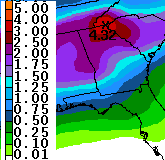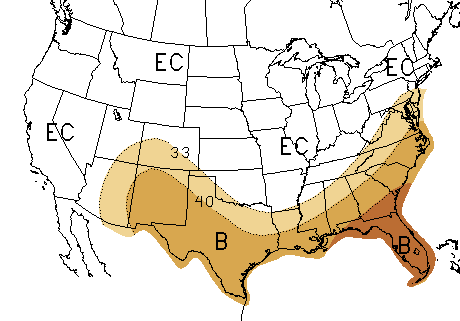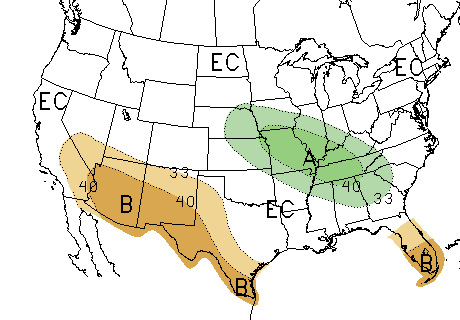More Rain for North Georgia
Monday, October 12th, 2009It’s starting to feel like we really are making up for all that missing rainfall from the drought. Today’s rainfall here in Lawrenceville of 2.52 inches brings the total rain for October here to 4.55 inches — more than an inch above what would be expected for the entire month. It’s the wettest October in at least five years.
Atlanta set a new rainfall record for October 12th today, with 2.5 inches. That makes the yearly rainfall for Hartsfield Airport to 50.68 inches. Normal annual rain for Atlanta is 50.2 inches, so we’ve met that milestone with nearly a quarter of the year to go. Athens also set a rainfall record for the day with 3.83 inches. The previous October 12 rainfall record for both cities was set in 1994. Lake Lanier is now at 1070.58 feet above sea level, having gained over half a foot during the day. The lake is now less than half a foot from full pool, although it would take a lake level of 1085 feet before it would be considered flooded. The last time Lanier was at full pool was in September, 2005.
Flooding is occurring, though. Suwanee Creek in Suwanee is at 9.79 feet, with flooding beginning at 8 feet. Big Creek in Alpharetta and the Chattahoochee River in Vinings are also at flood stage. I saw where the Yellow River had escaped its banks into the flood plain in my area.
 Unfortunately, it looks like we’re up for more rain on Wednesday. After a relatively pleasant day tomorrow, the rain will return, and according to the latest estimate from the Weather Service, shown at right, we could have another two to two and a half inches through Thursday evening, with higher amounts in the northeast Georgia mountains. If that scenario does pan out, expect more possible flooding, since the ground will be even more saturated than when the rain started this morning.
Unfortunately, it looks like we’re up for more rain on Wednesday. After a relatively pleasant day tomorrow, the rain will return, and according to the latest estimate from the Weather Service, shown at right, we could have another two to two and a half inches through Thursday evening, with higher amounts in the northeast Georgia mountains. If that scenario does pan out, expect more possible flooding, since the ground will be even more saturated than when the rain started this morning.
Once all the rain does go away on Friday, we will be in for some cooler weather over the weekend. The cold Canadian air that has brought an early Winter to much of the Plains states is moving east. Right now, overnight temperatures for the weekend are predicted to be in the mid 40s, but I wouldn’t be surprised if they end up a bit lower than that.
Speaking of cold in the west, I’ve got to take note of the fact that in Denver, Colorado, temperatures dropped to a chilly 18 degrees Saturday morning, and didn’t get out of the 20s, forcing the cancellation of the third game of the baseball playoffs. The low temperature was the coldest it’s been so early in the season in Denver. Temperatures also dropped below the freezing mark this morning in Chicago. It was 34 in Dayton, Ohio and 28 in Grand Rapids, Michigan on Sunday morning. Record cold temperatures were felt in Montana, and the cold in Idaho may make it difficult for farmers in Idaho to harvest their potato crop.
It doesn’t look like things are going to get much better in Georgia at least through the end of the month. The 6-10 and 8-14 day forecasts call for continued chances of above normal precipitation, and colder than normal temperatures in the 6-10 day period. Long-range winter forecasts call for a cold and wet winter in the southeast, a topic I’ll try to cover in more detail later in the week.
Sphere: Related Content


